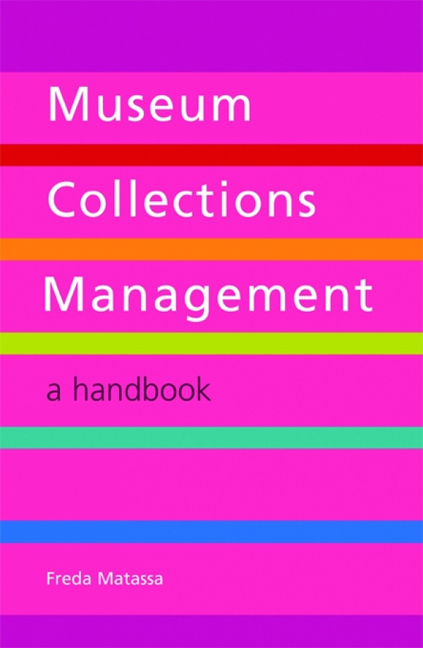7 - Storage
from Part 2 - Collections management: processes
Published online by Cambridge University Press: 08 June 2018
Summary
Fundamentals
In most collections of cultural objects there are more items in store than on display. This applies to all types and sizes of collections. The primary uses of some collections, however, such as biology or geology, are for research and study, and items in such collections rarely leave storage. Good storage is essential to the safekeeping and preservation of all types of collections. Safe and secure buildings and stable environmental conditions are essential, whatever the reasons for storage and whatever the length of time the items will be in the store.
Storage buildings
Cultural goods not on display are stored in many different types of building and in many different ways. Whatever the types of objects or reasons for storage, collections should be kept safely in secure buildings and stable environments.
Most museums have storage areas close to their exhibition galleries, often in cupboards or basements. More recently, there have been moves to create new, purpose‑built storage facilities away from the museum building, often housing a variety of facilities associated with collections care, such as conservation and photography studios and workshops.
There are also examples of museum stores adapted from former uses, such as underground military bunkers or salt mines. These can provide high security and stable internal environments but may be located in less accessible places. They are ideal for large or oversized items whose accommodation in a city might be costly per square metre of storage space and for items which are rarely used.
The ideal site for a storage facility will be sufficiently large to allow a clear space between the building and the perimeter fence that can be easily monitored.The building should be free‑standing and have good security and good access. It should not be in a flood‑plain area or close to rivers or canals.
A building connected to others or forming part of a larger block might be more at risk if there were to be a fire, flood or security breach in neighbouring premises. Few museums do in fact have the benefit of separate, purpose‑built storage buildings, and most museum stores are in city centres, which can pose difficulties in terms of both access and emergency response.
- Type
- Chapter
- Information
- Museum Collections Management , pp. 123 - 144Publisher: FacetPrint publication year: 2011



